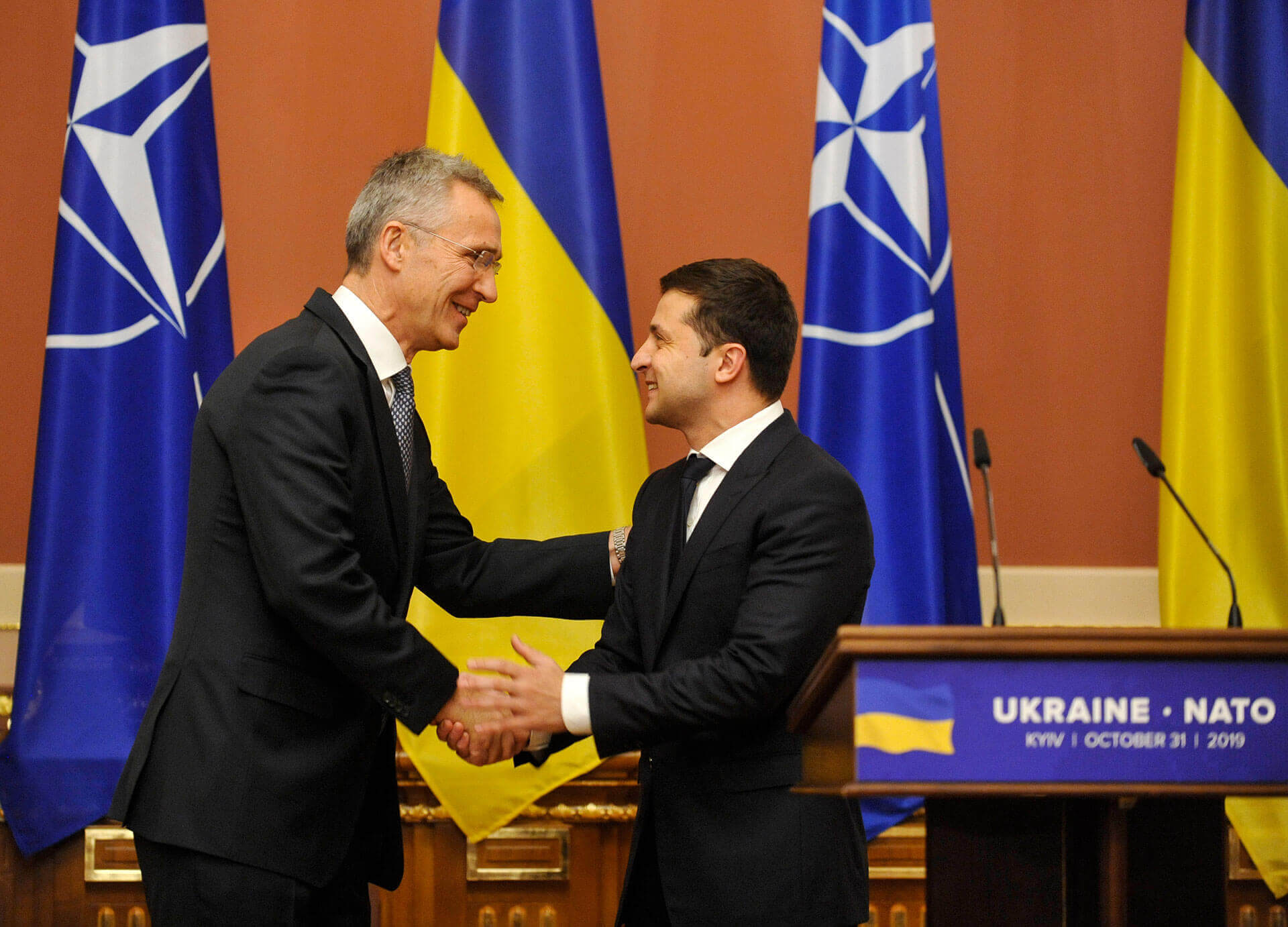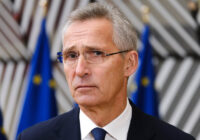NATO’s summit in Vilnius continues today. There is one issue is dominate proceedings above all others: if, and when, will Ukraine be allowed to join the alliance. NATO had pledged to welcome Ukrainian at the 2008 Bucharest summit. This article intends to provide an outline of the historical relationship between Ukraine and NATO, in particular explaining why the country has not become a member already.
Ukraine after independence
On December 21, 1991, the Alma-Ata Protocols formally ended the Soviet Union. The day before, the North Atlantic Cooperation Council (NACC) held its first meeting and pledged to uphold the values of “building a Europe a whole and free.” The NACC invited the former Soviet countries that now formed part of the Commonwealth of Independent States to join on March 10, 1992. This established Ukraine’s first formal relationship with NATO. In 1997, the NACC evolved into the Euro-Atlantic Partnership Council, which broadened the focus of cooperation outside of Europe.
NATO invited all members of the NACC to join the Partnership for Peace (PfP) programme on its launch in 1994. Ukraine became the first former Soviet country to sign on February 8, 1994. PfP was not a pathway towards membership in NATO, nor a vehicle for enlargement. Rather, it was a more mundane means of formalizing relations between countries that wanted to cooperate more closely with NATO.
Alongside these developing relationships with NATO that were open to all countries, Ukraine, alongside Belarus and Kazakhstan, was involved in more specific institutional mechanisms due to its inheritance of nuclear weapons following the breakup of the Soviet Union. On December 5, 1994, Russia, the US and the UK signed the Budapest Memorandum on Security Assurances, including the following clause:
The Russian Federation, the United Kingdom of Great Britain and Northern Ireland and the United States of America reaffirm their obligation to refrain from the threat or use of force against the territorial integrity or political independence of Ukraine, and that none of their weapons will ever be used against Ukraine except in self-defence or otherwise in accordance with the Charter of the United Nations
The process allowed for Ukraine to join the Nuclear Non-Proliferation Treaty and provided security assurances to Ukraine—which were reaffirmed by Russia and the US in 2009—to enable it to give up its inherited nuclear weapons. This cooperative spirit was further enhanced with Ukraine reaching a deal with Russia over the Black Sea Fleet in 1995.
Deepening ties
NATO has always acknowledged Ukraine as a country of unique importance. Just as with Russia, NATO developed a special relationship with Ukraine.
.In January 1997 NATO and Ukraine agreed to a special partnership, which by July 9th, 1997, led to the Charter on Distinctive Partnership, which included the provision that NATO and Ukraine recognize “that security of all states in the OSCE [Organization for Security and Co-operation in Europe] area is indivisible.”
Relations were further solidified on November 22, 2002, with the signing of the NATO-Ukraine Action Plan. This identifies areas where NATO and Ukraine can work more closely together across different security interests of mutual concern. On July 15, 2004, Ukrainian President Kuchma confirmed that the intention was not for Ukrainian membership of NATO, but a significant deepening of the relations with NATO (and the EU) as security guarantors of Europe.
The significant issue of membership became prevalent in 2008, with the so-called Letter of Three sent asking for a NATO membership action plan (MAP). The 2008 Bucharest summit decided that Ukraine (and Georgia) were not yet ready to be members of NATO, but that they would be members in the future, according to Jaap de Hoop Scheefer, NATO’s Secretary General. Russia stated that the promise was a “huge strategic mistake.”
In October 2018, the Ukrainian Parliament reaffirmed this position by formally making NATO (and EU) membership its central foreign policy objective.
This is the position today. A promise of membership at some point in the future, which has been affirmed since the 2008 Bucharest summit, though no specific MAP for how this will be delivered.
Different Ukrainian leaders and the relationship with NATO
Different Ukrainian administrators since the end of the Cold War have varied their approach to NATO membership, as has the Ukrainian public. Indeed, the decisive shift in favor of NATO membership among the Ukrainian public only occurred after the Russian invasion in 2022.
Leonid Kuchma, president from 1994 to 2005, initially seemed supportive of NATO membership but changed his approach towards the end of his tenure. I offer no comment as to whether this was his own personal desire or a reflection of the apparent political reality that Ukraine would not be admitted as a member. His successor Viktor Yushchenko, president from 2005 to 2010, was a keen proponent of NATO membership, though the general public was less convinced in the 2000s. At the time, opinion polls ran around the 25% mark in favor of NATO membership. This 2009 survey had it at 21% in favor of joining.
On the other hand, 57% did support a referendum on membership in 2008, influenced primarily by the Bucharest Summit and its acknowledgment that Ukraine would be able to join at some point in the future.
Viktor Yanukovych, president from 2010 to 2014, took the position that the existing relationship with NATO was sufficient and didn’t require any further development. In the wake of the Euromaidan uprising, he fled the country, with Petro Poroshenko taking over from 2014–2019. Given the Russian invasion of Crimea and the Donbas in February 2014, Poroshenko pursued a series of policies that were favorable to NATO membership, such as joint exercises and securing a Comprehensive Assistance Package at the Warsaw summit.
Volodymyr Zelensky, since 2019, has continued the approach of NATO membership and has continually called for, and received, assistance from NATO members. NATO has supplied equipment and military training following the 2022 Russian invasion of Ukraine. Public support for joining NATO is now regularly above 80% in favor.
No MAP for Ukraine?
Membership Action Plans have not traditionally been controversial in the NATO accession process. The process focuses on five areas: political and economic, military, resource, security, and legal issues. These areas have posed particular problems for Ukraine (and Georgia) since the Bucharest Summit. Ukraine has never met the criteria for a MAP; thus, its membership has been in a state of limbo. Ukraine is not alone in this; North Macedonia was obliged to wait twenty-odd years for its membership to be validated.
The main issues center on territorial sovereignty and the settling of ethnic disputes, alongside issues of corruption. Ukraine ranks 116th out of 180 countries on corruption, even after a decade of reform attempts.
Despite the lack of meaningful progress towards meeting the MAP requirements, Jens Stoltenberg stated in April 2023 that all NATO members have agreed that Ukraine will join NATO once the war with Russia is over. Indeed, it is now apparent that the accession process could be fast-tracked, with the usual MAP conditions set aside.
Before NATO considers the questions of the geopolitical situation and its relationship with Russia, there is a procedural question to decide. Should NATO set aside the MAP to allow Ukraine to join? Proponents point to Sweden and Finland’s accession earlier in 2023, though each of these countries meets the MAP requirements and has a long history of doing so. Simply waiting for the war to end before offering membership is a bad plan as it could encourage Russia to prolong hostilities to avoid Ukraine joining NATO. In any case, it could be argued that, given the levels of assistance provided to Ukraine, it is a de facto member of NATO already.
The tone of the statements that emanate from the Vilnius summit will be crucial. NATO needs to thread the needle of reassuring Ukraine while avoiding encouraging Russia to achieve its objectives by prolonging the conflict. Further, consideration has to be given to other membership applications. For instance, Georgia, the other declared future member from Bucharest 2008, will likely question why it hasn’t received a fast-track membership process too.
Despite the support of many leaders of NATO countries, the public remains much more sceptical. For example, a May 2023 poll of Germans found the majority opposed offering Ukraine NATO membership. Support fluctuates between different members; there is no consensus of public opinion for Ukrainian membership of NATO. Never mind the trickier questions as to whether it should be fast-tracked, or when precisely it should join.
Navigating the challenge could well prove to be the most significant issue that the Alliance has faced since its founding in 1949.
[Anton Schauble edited this piece.]
The views expressed in this article are the author’s own and do not necessarily reflect Fair Observer’s editorial policy.
Support Fair Observer
We rely on your support for our independence, diversity and quality.
For more than 10 years, Fair Observer has been free, fair and independent. No billionaire owns us, no advertisers control us. We are a reader-supported nonprofit. Unlike many other publications, we keep our content free for readers regardless of where they live or whether they can afford to pay. We have no paywalls and no ads.
In the post-truth era of fake news, echo chambers and filter bubbles, we publish a plurality of perspectives from around the world. Anyone can publish with us, but everyone goes through a rigorous editorial process. So, you get fact-checked, well-reasoned content instead of noise.
We publish 2,500+ voices from 90+ countries. We also conduct education and training programs
on subjects ranging from digital media and journalism to writing and critical thinking. This
doesn’t come cheap. Servers, editors, trainers and web developers cost
money.
Please consider supporting us on a regular basis as a recurring donor or a
sustaining member.
Will you support FO’s journalism?
We rely on your support for our independence, diversity and quality.





Comment